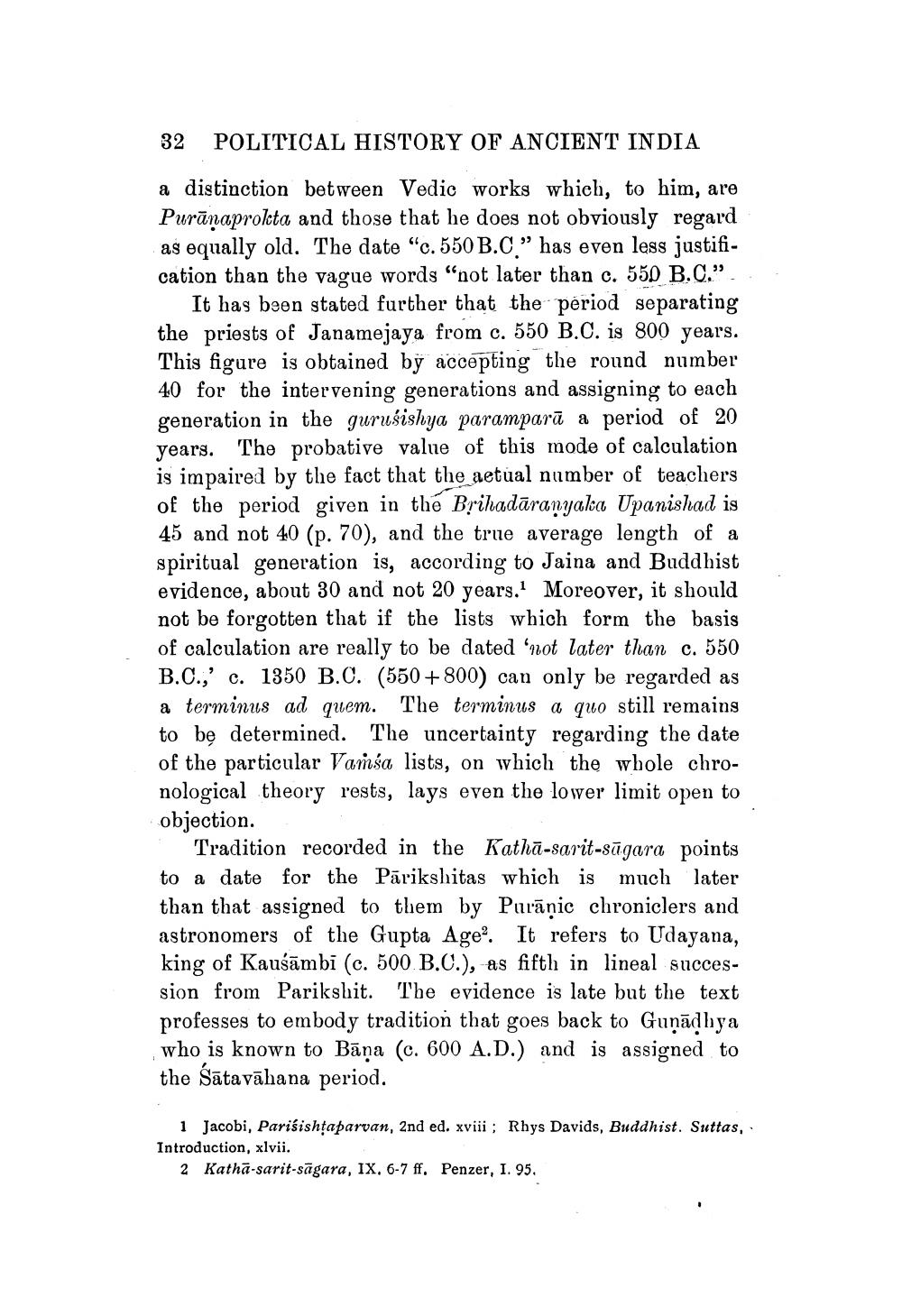________________
32 POLITICAL HISTORY OF ANCIENT INDIA
a distinction between Vedic works which, to him, are Purānaprokta and those that he does not obviously regard as equally old. The date "c. 550 B.C." has even less justification than the vague words "not later than c. 550 B.C.”.
It has been stated further that the period separating the priests of Janamejaya from c. 550 B.C. is 800 years. This figure is obtained by accepting the round number 40 for the intervening generations and assigning to each generation in the guruśishya paramparà a period of 20 years. The probative value of this mode of calculation is impaired by the fact that the aetual number of teachers of the period given in the Brihadāranyaka Upanishad is 45 and not 40 (p. 70), and the true average length of a spiritual generation is, according to Jaina and Buddhist evidence, about 30 and not 20 years. Moreover, it should not be forgotten that if the lists which form the basis of calculation are really to be dated 'not later than c. 550 B.C.;' c. 1350 B.C. (550 +800) can only be regarded as a terminus ad quem. The terminus a quo still remains to be determined. The uncertainty regarding the date of the particular Vamsa lists, on which the whole chronological theory rests, lays even the lower limit open to objection.
Tradition recorded in the Kathā-sarit-sagara points to a date for the Pārikshitas which is much later than that assigned to them by Purāṇic chroniclers and astronomers of the Gupta Age'. It refers to Udayana, king of Kaušāmbi (c. 500 B.C.), as fifth in lineal succession from Parikshit. The evidence is late but the text professes to embody tradition that goes back to Gunādhya who is known to Bāņa (c. 600 A.D.) and is assigned to the Sātavāhana period.
1 Jacobi, Parišishtaparvan, 2nd ed. xviii ; Rhys Davids, Buddhist. Suttas, Introduction, xlvii.
2 Kathā-sarit-sāgara, IX, 6-7 ff. Penzer, I. 95.




